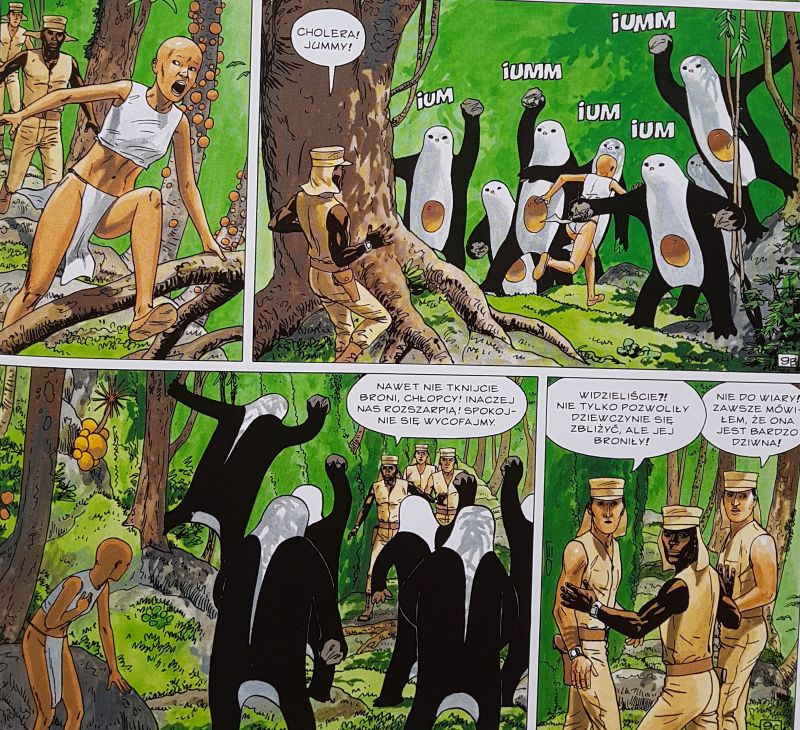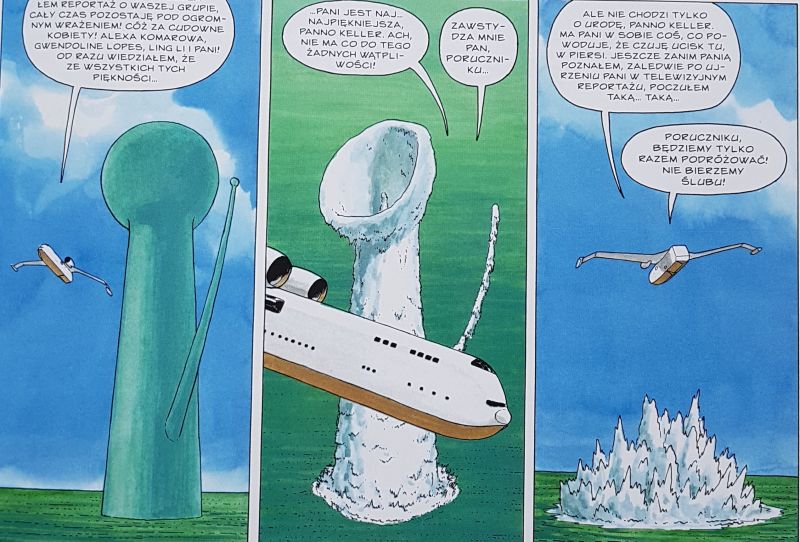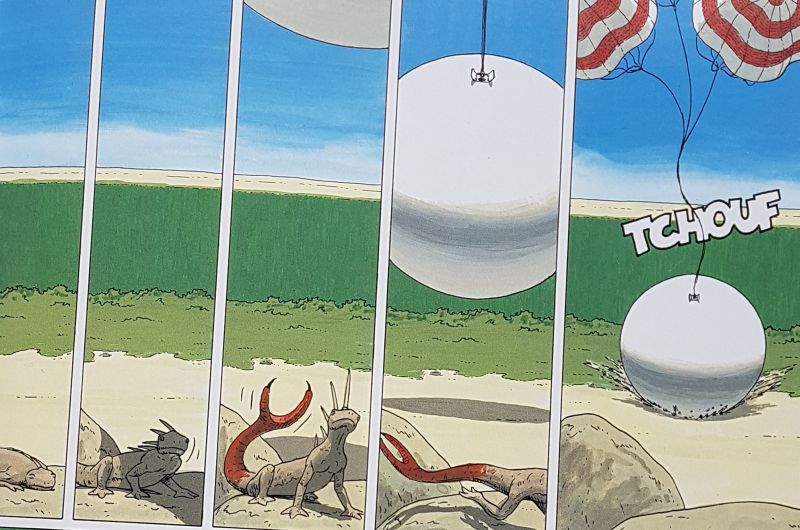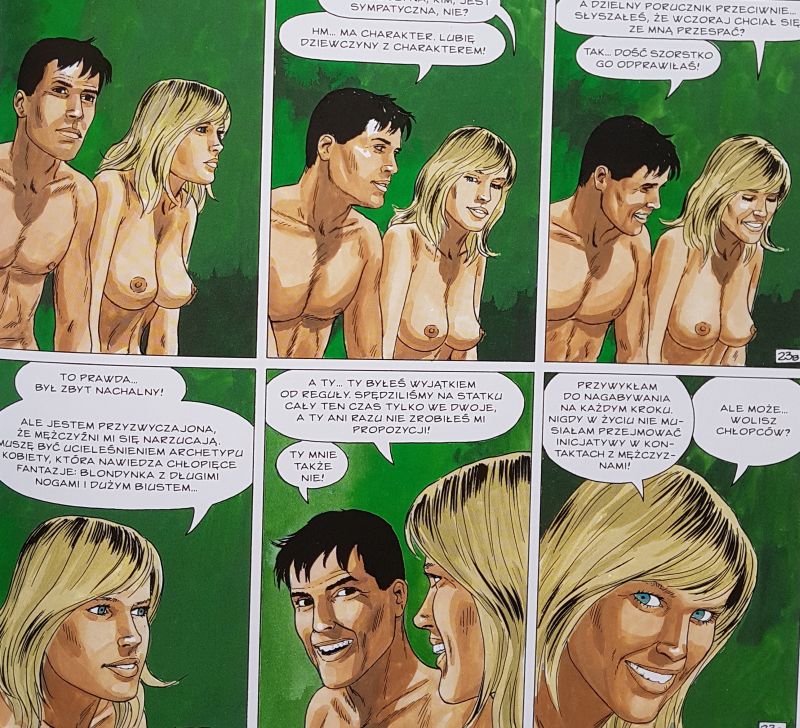We live on the brink of a climate catastrophe. The more it is worth reaching for pro-ecological titles, even if they concern planets other than our Earth. Just like in Betelgeuse by the Brazilian artist Leo, which was resumed by the Egmont publishing house as part of the series "Pansze Europa".
At one time he enjoyed great popularity documentary series Wild future ( The Future is Wild ), which showed a hypothetical animal evolution after the extinction of man. Scientists and experts focused on three periods: in five, one hundred and two hundred million years. The production was created fourteen years ago, hence the CGI used in it looks a bit pale from today’s perspective. The local creatures, however, defend themselves with fantastic ideas, such as the bog, the land octopus. The series is a representative of the so-called “Speculative evolution”, popularized in 1981 by Dougal Dixon with the book After Man: A Zoology of the Future(where is the Polish edition, I’m asking?). Why am I quoting all of this? Because Leo is much better at creating animals than writing scripts.
Betelgeza to sequel Aldebarana. I haven’t read the previous title, but Leo has created a sequel in which the previous threads are summarized in a clear and clear way. There are not many exhibition dialogues and shuffling in quoting previous events, which I always count as a plus. The plot itself looks like this: Betelgeuse is the second planet that mankind has decided to colonize. However, the ship with the settlers met a catastrophe – most of the passengers mysteriously died. The survivors went to a planet with a very unfavorable biome (deserts covering almost the entire globe with the only friendly areas located by rivers), but they came into conflict and split into two hostile camps. A rescue mission consisting of Kim Keller – Aldebaranka is sent to the planet, taking capsules provided by an alien life form (shape-shifting mantrissa), increasing potential and giving longevity. However, this ship also suffers a breakdown. Rescuers try to reconcile feuding teams and let the rest of mankind know what the situation is on Betelgeuse.

Do you want to sleep with me?
Leo touches on very interesting and extremely important topics: the colonization of foreign lands and its consequences or human impact on the environment. All this has a timeless overtone, but – unfortunately – it fares much worse on paper when the characters come to speak. The dialogues are terrible: the characters talk a lot about emotions, but in a naive and banal way. When I read this comic book, I was firmly convinced that I was dealing with something from the seventies or eighties where the narrative had different standards. How surprised I was to discover the original release year 2000 on the cover.
And the worst thing about this title are all male-female relations. Everyone, every man that meets Kim, has to tell her to her face how beautiful she is. And after a while, add that he would like to sleep with her. My guess is that a side effect of taking a drug from an alien mantrissa are pheromones that increase sex drive, although nothing of the kind is suggested in this volume. It is also possible that the conventions changed in the 22nd century, but from today’s perspective, the constant focus on the beauty of the characters (and on their breasts, more on that later) has a sexist dimension.

Xenobiology
As I have already mentioned, the French artist devotes a lot of space to presenting new species of fauna and flora. Almost every second frame shows a genre – sometimes in the foreground, sometimes in the background. You can see that it gave Leo great pleasure. Although I must admit right away that the artist’s creativity will not match the mentioned Wild Future . The vast majority of organisms are very similar to those known from Earth: and this dog is connected to a rattlesnake, and this fisherman has a neck as long as a giraffe. The same goes for the most important jumas in this volume, which look like the endless combination of a sloth and a panda (can you imagine anything cuter?). All of this is drawn very nicely, although I, as a monster lover, would not despise something a bit more creative.

You have very nice breasts
The animals from Leo are nice, even very nice. Say the same about the heroes. The artist draws people in a very classic and realistic way, but he has a problem with expressing them. What in theory is supposed to look like a smile, in practice, looks like a very disturbing frown, which the Spanish artist Zonzo would not be ashamed of. Also the colors are uneven. While the jungle full of saturated greens is beautiful, in the case of humans there are sometimes very strange shadows – for example, the center of the face much darker than both sides (so how does the light fall on Aldebaran and Betelgeuse?). It’s also hard to understand Leo’s intentions in showing her naked breasts so often and densely. In fact, the topic of the breast (e.g. which heroine has the bigger one) appears even in several dialogues, and for one character it is a very important element of her development. I don’t mind nudity, but in this case it smacks of the so-called “Buzzing the cycem”. I have read that Leo represents many counterculture themes in his work. Unfortunately, this approach to negligee and sex is more distasteful than the progressive dimension.

End of the mission
Despite my complaints, Betelgeuse gave me quite a lot of reading pleasure. It is nice to lose yourself in the beautiful circumstances of nature, especially so wild and strange. You can see that Leo, even if a bit naively, believes in man and that it is possible to get it in time to save the planet. And that is always a plus.

